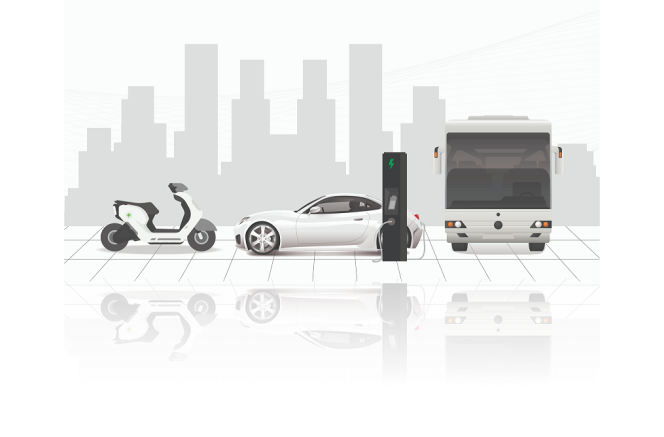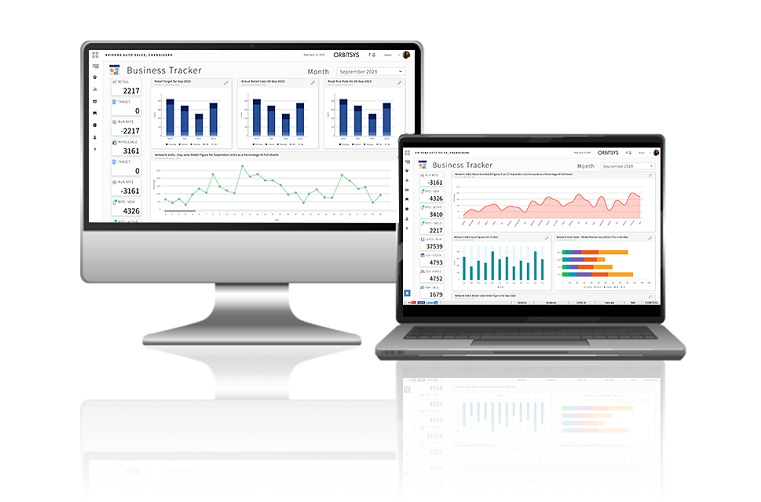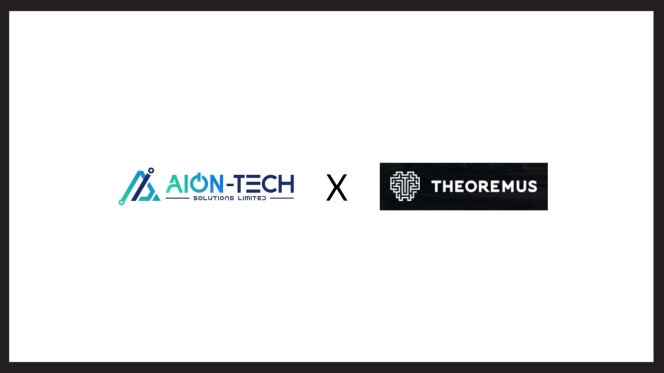- Orbitsys
- Harvinder Pal Singh
- Orbitsys DMS
- Daewoo
- Skoda
- Isuzu
- Benlli
- Amo Mobility
- Omega Seiki
- Lohia Auto
Tackling Hurdles
- By Sharad Matade
- December 11, 2024

Orbitsys DMS leverages its cloud-based platform, allowing centralisation of data and remote access to tackle connectivity and data hurdles in the automotive industry.
As the world relies more on technology and data to tackle different situations or to streamline processes, loopholes exist inevitably. Orbitsys leverages its cloud-based platform, allowing centralisation of data along with remote access for the automotive industry to tackle dealerships and hurdles.
“We tackle connectivity and data hurdles in the automotive industry by offering a cloud-based platform. This allows dealerships and OEMs to centralise data, which eliminates scattered systems, creating a single source of trusted data for customer and vehicle information. Moreover, accessing data remotely enables secure, role-based and real-time data visibility across multiple locations, improving decision-making,” informed Harvinder Pal Singh, Chief Business Officer, Orbitsys DMS.
The software services company also tackles challenges pertaining to supply chain management by leveraging cloud-based tools that monitor performance in real-time. “We optimise supply chain management by providing tools for efficient inventory management, order tracking and supplier collaboration. The platform enables companies to monitor supply chain performance in real-time, identify bottlenecks and make data-driven decisions to improve efficiency and reduce costs,” said Singh.
However, in this rapidly changing landscape of digitisation, data security has assumed an important position. Commenting on ensuring data security and privacy in its application, Singh said, “We prioritise data security and privacy in our solutions for the automotive sector by implementing robust security measures such as encryption, access controls and regular security audits by industry-leading security partners. The platform ensures that customer data is protected against unauthorised access and adheres to industry standards and regulations for data privacy.”
Furthermore, as Orbitsys is an ISO certified company, it conducts regular audits and updates the solutions to comply with statutory requirements, ensuring that customers can confidently use their services while meeting regulatory obligations.

When asked how Orbitsys’ technology enhances efficiency and productivity in automotive production and distribution processes, Singh explained, “We improve order accuracy by leveraging real-time customer orders and vehicle inventory data of dealerships that can be shared with manufacturers, enabling them to adjust production plans and reduce the risk of overstocking or understocking at dealerships. Customers can be provided estimated arrival times and updates on vehicle delivery periods. Moreover, efficient service at dealerships, facilitated by our system, can lead to quicker turnaround times for repairs and maintenance, potentially reducing warranty claims and improving customer satisfaction.”
Digital solutions
Some of the specific solutions and services offered by Orbitsys include customer relationship management systems. These comprehensive, pre-configured auto-centric CRM platforms help automotive dealerships manage all interactions and communications with customers, including lead tracking, opportunity management and service requests.
It offers data repository services where a centralised repository keeps all customer and vehicle data, streamlining operations and improving data visibility. The Orbitsys CRM-DMS supports the entire sales process, from lead generation to deal closing, while the after-sales service module helps manage service appointments, track repair work and bill customers. The system can also be integrated with workshop management systems to streamline service operations.
Its inventory management system helps manage inventory levels for parts and vehicles, ensuring that dealerships have the right stock on hand to meet customer demand. It also offers the full range of pre-configured customer feedback programmes that are used by businesses to gauge customer satisfaction.
Besides these offerings, Orbitsys offers a range of mobile apps for OEMs, dealerships and vehicle owners, providing on-the-go access to key information and functionality.
Its vehicle and parts distribution platform for OEMs and dealers offers a comprehensive integration to OEM vehicle warehouse operations and enables on-line vehicle ordering as well as fund-management.
Moreover, the core platform has the capability to connect to any OEM or external system for secure and automated data flows.
The service provider leverages its technological expertise to innovate in the automotive sector by focusing on streamlined dealer business management and cloud-based accessibility. The system offers an all-in-one solution for dealerships, managing various aspects like distribution, sales, service and customer relationship management.
This eliminates the need for multiple disconnected systems and enforces pre-defined processes to ensure data integrity and minimise the possibility of frauds.
“Our platform is designed on pre-defined processes that are enforced with minimal manual intervention so that all reports and insights use trusted data. This attention to process also minimises the possibility of fraud. Moreover, our web-hosted software allows dealerships with multiple locations and brands to access and manage data and operations centrally. This provides real-time data visibility, improving decision making and streamlining processes across the network,” informed Singh.
Answering how Orbitsys contributes to electric vehicle (EV) technology advancements, he said, “We offer features that support EV manufacturers in managing customer relationships, streamlining operations and analysing data. This helps EV manufacturers improve efficiency, reduce costs and accelerate the development and adoption of EV technology.”
Market presence
The service provider has been present in the automotive segment since 1995 and has worked with brands such as Daewoo, Skoda, Isuzu and Benelli in ICE and Amo Mobility and Omega Seiki and Lohia Auto in EV segment. Over 1,700 automotive dealers and workshops have chosen to work with their system so far. “We work closely with the Federation of Dealer Associations in India to engage with dealerships across the country. Orbitsys has been the DMS partner for India’s most prestigious Autocar Awards – created and hosted by India’s most trusted automobile publication, for over six years now,” informed Singh.

He added, “Orbitsys CRM-DMS stays ahead in the rapidly evolving automotive market by continuously innovating its service offerings to meet the changing needs of customers and the industry. We invest in research and development to develop cutting-edge solutions with mobile capabilities that help automotive businesses stay competitive. We actively collaborate with industry partners and engage with customers to understand their challenges and develop tailored solutions that address their specific needs.”
Commenting on long-term goals and vision in relation to the automotive sector, Singh said, “We intend to create a globally scaleable platform that will work across multiple markets. On the technology side, we are actively working on plans for block-chain integration. AI integration will be coming to specific modules on a small scale first and then become an integral part of the system. We will integrate closely with connected vehicle systems to bring the best vehicle ownership experience to customers.
- ZF Group
- Samsung Electronics
- ADAS
- Harman International
- Christian Sobottka
- Mathias Miedreich
- Young Sohn
Harman To Acquire ZF Group’s ADAS Business For EUR 1.5 Billion
- By MT Bureau
- December 23, 2025

Harman International, a subsidiary of Samsung Electronics, has entered into a definitive agreement to acquire the Advanced Driver Assistance Systems (ADAS) business from ZF Group for EUR 1.5 billion.
The acquisition includes ZF's automotive compute solutions, cameras, radars and ADAS software. Approximately 3,750 employees across Europe, the Americas and Asia are expected to transfer to Harman upon completion of the deal, which is scheduled for the second half of 2026.
The move is part of Harman’s strategy to transition towards software-defined vehicles (SDV). By combining ZF’s ADAS technology with its own digital cockpit products, Harman aims to develop centralised compute platforms. This architecture is intended to link safety and assisted driving functions with in-vehicle connectivity and intelligence on a shared platform.
The integration is designed to reduce system complexity for car manufacturers (OEMs), allowing for more efficient innovation cycles and the scaling of context-aware vehicle experiences.
Christian Sobottka, CEO and President, Harman’s Automotive Division, said, “The industry is at an inflection point where safety, intelligence, and in-cabin experience must come together through a unified computing architecture. With this agreement, we take a strategic step to expand our portfolio with complementary ADAS capabilities that unlock a new class of cross-domain experiences ranging from perception-informed audio cues to more personalized, situation-aware driving. Combined with Harman’s long-standing automotive expertise and supported by Samsung’s broader technology leadership, this positions us to help OEMs design the next generation of intelligent, empathetic, and connected vehicles.”
Mathias Miedreich, CEO, ZF Group, said, “With Harman, we have found the ideal partner to fully unlock the growth and innovation potential of our ADAS business. At the same time, this deal makes an important contribution to reducing our company’s debt and allows us to focus our resources on the core technologies in which ZF is a global leader.”
Young Sohn, Chairman of the Board at Harman, added, “Since acquiring Harman in 2017, the company has scaled its automotive and audio business from USD 7 billion to more than USD 11 billion today. Adding ZF’s ADAS capabilities builds on that momentum. Harman will further expand its technology foundation to deliver safer, more intelligent, and more intuitive in-vehicle experiences. This acquisition reinforces Harman’s leadership in the industry’s transformation and underscores Samsung’s long term commitment to the future of mobility.”
Following the close of the transaction, Harman will align its engineering and ADAS teams to accelerate the development of next-generation platforms. The companies have committed to maintaining support for existing programmes during the transition period. Carolin Reichert, Chief Strategy Officer of HARMAN, noted that the deal represents a ‘major milestone’ and demonstrated the company's ability to execute a ‘complex carve-out.’
Pioneer To Reveal 'Ride Connect' Motorcycle UX At CES 2026
- By MT Bureau
- December 23, 2025

Pioneer Corporation has announced it will unveil Pioneer Ride Connect, a user experience (UX) solution for motorcycles, at CES 2026 in Las Vegas. The system is designed for the production of connected clusters and relies on software updates to provide features to riders.
The solution is the result of a technology collaboration with HERE Technologies. It integrates the HERE SDK, a cloud-based mapping and navigation kit covering more than 120 countries, to provide location-based services for the global two-wheeler market.
Pioneer Ride Connect incorporates several technologies intended to manage hardware costs and smartphone battery life:
- BLE-based Screen Projection: The system uses Bluetooth Low Energy (BLE) to project map images and service information from a smartphone onto the onboard cluster. This method reduces the processing power required by the motorcycle's hardware and lowers smartphone power consumption.
- HMI and AI Integration: The platform features Voice Tap, a voice-based Human-Machine Interface (HMI) for hands-free operation. Edge AI is used to share real-time traffic, weather and hazard data.
- Global Navigation: Through the HERE SDK integration, the system provides routing and traffic information optimised for motorcycles. It includes an offline mode for use in areas with limited network connectivity.
The development follows a partnership between Pioneer and HERE Technologies established in December 2024. The HERE SDK allows for the development of location-aware applications featuring routing and geocoding services across Android, iOS and Flutter platforms.
Pioneer stated that the integration of these technologies serves as a foundation for providing connected services to two-wheeler manufacturers and riders globally.
Seiji Tanezawa, Executive Officer of Pioneer, in charge of business development and strategic alliances, said, “Pioneer Ride Connect is a revolutionary platform that continuously provides software-based upgrades to motorcycles’ UX. By combining Pioneer’s industry-leading expertise in designing a compelling UX with HERE Technologies’ globally accessible Location Intelligence platform, Pioneer Ride Connect transforms the concept of smarter and safer connected two-wheelers into a tangible reality. I’m delighted to unveil our leading-edge technology and ambitious vision at the upcoming CES 2026.”
Deon Newman, Senior Vice-President & General Manager, Asia Pacific, HERE Technologies, said, "Pioneer’s ‘Ride Connect’ brings a smarter, safer motorcycle experience to life - and we’re proud to power it with HERE SDK. Together, we’re making connected services accessible to riders across global markets, with reliable navigation and motorcycle‑optimised routing that work in dense cities to remote mountain roads. It's a meaningful step forward for connected mobility.”
Kinetic Watts & Volts Partners With Jio Things For Connected EVs
- By MT Bureau
- December 22, 2025
Kinetic Watts & Volts (KWV), the electric mobility arm of Kinetic Engineering, has entered a technology partnership with Jio Things, a subsidiary of Jio Platforms.
The collaboration will integrate voice-assisted controls, IoT-enabled digital clusters and connected vehicle technologies into Kinetic’s upcoming electric two-wheeler range.
The partnership aims to deploy a suite of digital features for Indian riders, utilising Jio’s IoT ecosystem, which includes hardware, cloud infrastructure and device management.
The collaboration will introduce several capabilities to the Kinetic EV platform:
- Voice Assistance: Interaction for vehicle functions.
- Smart Clusters: Digital instrument panels providing real-time data and infotainment.
- Telematics: Cloud-based analytics for performance monitoring and diagnostics.
- Fleet Management: Tools for commercial operators to track and manage vehicle assets.
The connected platform will be embedded across future KWV models to provide a standard digital experience across different customer segments.
Ajinkya Firodia, Vice-Chairman & Managing Director, Kinetic Watts & Volts, said, “Kinetic has always stood for democratizing mobility and innovation. With this partnership, we now extend that commitment into digital mobility, bringing voice assistance and connected features to everyday riders, so technology becomes truly intuitive and useful. This collaboration also stays true to our motto of ‘Easy’ a philosophy already visible in practical features such as Easy Key, Easy Flip and Easy Charge; and now strengthened with seamless digital experiences that simplify ownership for our customers.”
Ashish Lodha, President, Jio Platforms, said, “Our partnership with Kinetic exemplifies our vision to build a truly connected automotive ecosystem in India. By bringing Jio’s voice assistance and IoT capabilities to the two-wheeler segment, we are not just upgrading vehicles; we are redefining the interaction between man and machine, bringing the benefits of smart mobility to every Indian rider.”
The partnership seeks to combine Kinetic’s manufacturing experience with Jio’s digital infrastructure to make connected electric vehicles more accessible. Objectives include improving rider safety, increasing digital uptime and providing data analytics for fleet operators.
- BMTC
- BMRCL
- DULT
- TSRTC
- HMDA
- HMRL
- ETO Motors
- ROQIT
- AION-Tech Solutions
- Theoremus AD
- Chankya Bellam Radhakrishna
- Hristo Popov
AION-Tech Solutions And Theoremus AD Partner For Urban Mobility In India
- By MT Bureau
- December 22, 2025

AION-Tech Solutions has signed a Memorandum of Understanding (MoU) with Theoremus AD, a Bulgarian company specialising in transport orchestration, to develop urban mobility solutions in India.
The partnership will begin with First–Middle–Last Mile (FMLM) mobility integration pilots in Telangana and Karnataka. These pilots will focus on demand-responsive electric vehicle (EV) feeder services connected to metro and bus corridors.
The collaboration involves the deployment of a multimodal transport orchestration platform. This system integrates metro rail, bus networks, EV fleets, parking infrastructure and mobility data into a single framework. The platform uses AI and data for demand forecasting, EV utilisation, congestion management and operational visibility.
During the pilot phase, EV fleets will use data and analytics to manage routing, charging, and service planning. Performance will be monitored through indicators such as ridership, fleet utilisation, and carbon reduction.
Chanakya Bellam Radhakrishna, Director, AION-Tech Solutions, said, “This collaboration marks an important step in our mission to build intelligent, integrated, and scalable mobility ecosystems for Indian cities. By combining Theoremus AD’s global orchestration expertise with the on-ground execution capabilities of our subsidiaries, ETO Motors and ROQIT, we aim to strengthen first–middle–last mile connectivity and deliver measurable sustainability outcomes.”
AION-Tech Solutions will manage execution through two subsidiaries:
- ETO Motors: Will deploy and operate the EV fleets for the pilots.
- ROQIT: Will provide digital platforms, control dashboards and visibility tools for transport authorities.
Hristo Popov, CBO, Theoremus AD, said, “India is one of the most dynamic and complex urban mobility markets globally. Partnering with AION-Tech Solutions enables us to localise our platform and deploy real- world pilots that showcase the impact of integrated data, AI-driven optimisation and coordinated EV operations at scale.”
Following the pilots, the partners intend to engage with transport and urban development agencies to expand the solution. Target organisations include TSRTC, HMDA, and HMRL in Telangana, and BMTC, BMRCL and DULT in Karnataka. The project will operate under Indian data residency and cybersecurity frameworks.






Comments (0)
ADD COMMENT